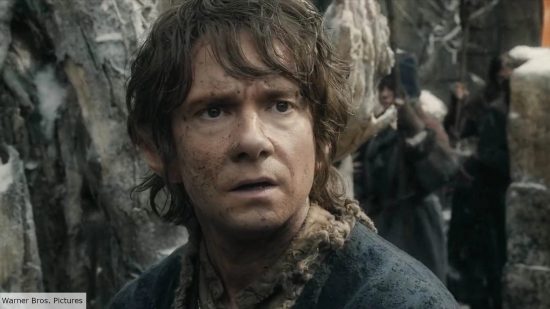Professor J.R.R. Tolkien’s two most famous works, The Hobbit and the Lord of the Rings, are difficult to compare. The two novels might be set in the same world, with many of the same characters, and form one entire narrative, but they’re very different. The Hobbit is, ultimately, a magical children’s fantasy adventure book. The story was, after all, originally conceived by Tolkien to entertain his young children.
Unsurprisingly, then, The Hobbit has a completely different tone and structure to The Lord of the Rings, which is a deeper, darker, and generally more mature work. So, when people say that they prefer one to the other, that’s fine — but it’s like saying you prefer caviar to fish fingers. They were created to serve different purposes, and comparing them won’t get you very far.
And yet, people insist on comparing Peter Jackson’s The Hobbit trilogy to his earlier Lord of the Rings movies. In fact, plenty of the criticisms that are levelled against The Hobbit trilogy specifically draw a contrast between it and The Lord of the Rings. When the source material is so vastly different, that can’t be fair, surely? Yes, The Hobbit trilogy has issues and quite a lot of them. But, the Lord of the Rings trilogy wasn’t perfect either. So why is The Hobbit trilogy so singularly maligned?
It’s neither new nor groundbreaking to make the observation that The Hobbit trilogy is bloated. It would literally take a shorter amount of time to read the book in one sitting, than it would to watch the theatrical release of the adventure movies from start to finish – let alone the extended editions.
Why is it so long, when the book is relatively short? Whereas The Lord of the Rings trilogy had to chop down the book, removing countless important scenes and details, The Hobbit trilogy was able to create additional plotlines and characters.
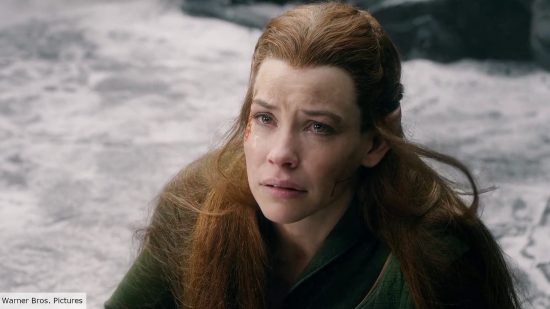
Evangeline Lilly’s Tauriel is often held up as the worst culprit here, and the inclusion of her as a love interest is hard to justify – especially when the resulting romance is so limp. But, it’s the additional characters in Dale are more egregious.
They add so little, and worse than Tauriel, are completely unmemorable. What makes this so frustrating is that we don’t get enough of the characters who really are in Tolkien’s book. Inexplicably the decision was taken to reduce screen time from characters who are in the book, like Beorn, in order to increase the screen time for Lord of the Rings characters who aren’t, like Legolas.
Another one of these additional characters is Azog the Defiler, who is shoehorned into the plot at any given moment, along with his host of shiny, bad-video-game-cutscene orcs. These plasticy, abysmally CGI-ed orcs have a curious, ethereal quality. They look like astral projections, as if your hand would pass right through them. Because of that, they feel weightless and floaty, as if they belong in a Kate Bush video.
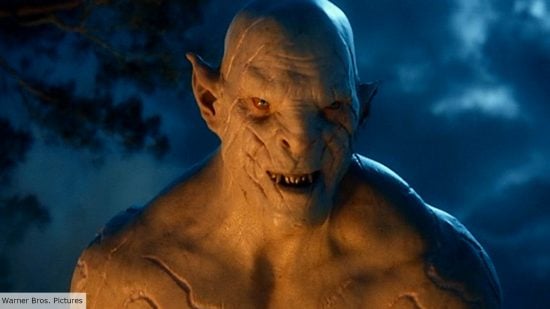
As a one off, this is a kind of detail that isn’t a big deal. Bad CGI is nothing new, and can even slip into big budget productions – just look at the recent Marvel movies. Instead, it turns itself into a significant problem because the movies lean so heavily on the orcs as enemies, and because they’re so determined to make Azog the overarching villain (let’s not even go there).
It’s hard to make your villains threatening if they don’t ever feel like they’re really there. When you compare Azog to, say, Lurtz, Gothmog, or Grishnákh from The Lord of the Rings, the difference is vast. How did anyone look at Azog in his confrontation with Thorin in the trilogy’s climax and say ‘yes, this is an improvement’? It’s a baffling step backwards.
Then, there’s the sexy Dwarves. In theory, there’s nothing wrong with sexy Dwarves. I’m sure there are plenty of them, in fact. The problem in The Hobbit is that the sexy Dwarves are made sexy by removing the visual cues that signal that they’re actually Dwarves. Instead, the three main suspects (Thorin, Fili, and Kili) just pass as hot little men. This might not seem like too much of an issue at first, but it fits into a broader problem with how these fantasy movies treat the Dwarves.

The Hobbit is a story about a small group of Dwarves fighting against incredible odds, and striving through unimaginable challenges to reclaim their dignity and pride. The bonds between these characters are unbreakable, and these 13 Dwarves should be The Hobbit trilogy’s heart and soul. When we see one, we should at least be able to recall their name. Instead, it’s ‘the one with the hat’, and ‘the weedy one’, and ‘the one with the cool hammer’, and ‘the one that grunts’.
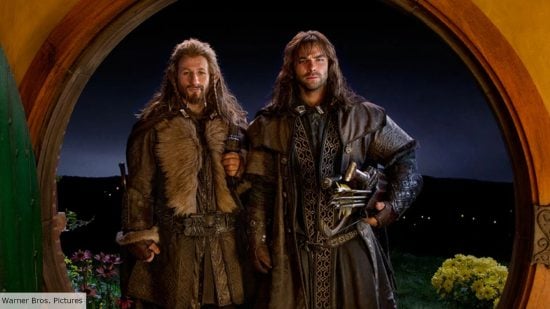
One of the benefits of having an extended running time is the ability to flesh out characters. Except for the human-looking Thorin, Fili, and Kili, most of the Dwarves can be exchanged, at any time, for any other. The fact that you can spend three movies, and many, many hours with these characters and come away not even being sure of their names really is a travesty.
Some of these issues are bigger than others, but none are so insurmountable that they make The Hobbit trilogy unwatchable. They might be frustrating, and they certainly could have been better, but they aren’t actively bad movies. In fact, The Hobbit trilogy is eminently watchable, and makes for perfect casual, lighthearted viewing: especially if you have a mug of hot chocolate to hand, and it’s raining outside. I certainly wouldn’t say no to that.
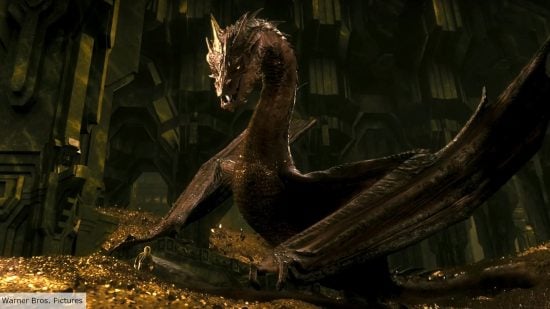
And, of course, the trilogy has great moments. Martin Freeman, with his somewhat-mousey face, is inspired casting for Bilbo Baggins. The early scenes, where he is still in the Shire at the beginning of the narrative utilise him expertly.
Ian McKellen is, as ever, fantastic as Gandalf – and especially Gandalf the Grey. Benedict Cumberbatch as Smaug is also a revelation. He imbues the dragon with deep, brooding intellect and simmering malice in equal measure, while the visual work on the great, greedy dragon is unimprovable.
Riddles in the dark is, also, excellent. How could it not be? Bilbo duelling verbally with Andy Serkis’s Gollum is the stuff of dreams, lifted directly from the book. Gollum is perfectly menacing, and more threatening than he appears in The Lord of the Rings which is exactly how it’s presented in Tolkien’s writing.
There are plenty of other aspects worthy of praise, too, and the vast majority of the trilogy’s most memorable moments are when they stick close to the source material. The Hobbit’s worst, most frustrating moments come when it deviates too far, stretching itself to be more like The Lord of the Rings.

But, they’re different stories, and the differences should have been celebrated. Instead, The Hobbit was reshaped to be as close to the Lord of the Rings as possible.
The issues with The Hobbit – its expanded scale, manufactured romance, a big bad recurring villain – are only issues because the trilogy was shoehorned into a The Lord of the Rings-shaped box. This desire to make The Hobbit more like The Lord of the Rings trilogy means that it’s not only possible to compare the two trilogies, but necessary.
In truth, The Hobbit should have been nothing like The Lord of the Rings. Yes, the adventure spans Middle-earth, but at a much, much smaller scale. The stakes, whether or not the Dwarves can retake the Lonely Mountain, are decidedly minuscule in comparison to The Lord of the Rings.
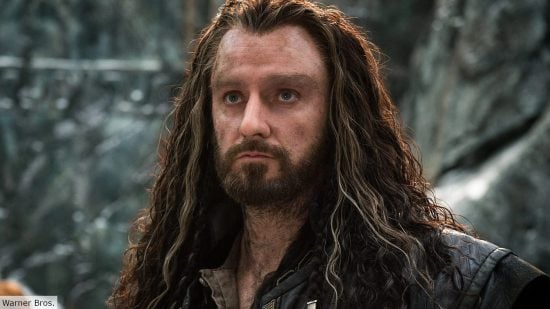
Primarily, it’s a story of personal growth, rather than the end of the world. Comparisons between the two are only fair, because The Hobbit was so desperate to be more like The Lord of the Rings trilogy, when it should have had its own distinct identity.
It doesn’t, however, instead choosing to rely on the tone, style, and format of what’s come before. Unlike the books, comparing the two movie trilogies is, unfortunately, fair game.
You can watch The Hobbit trilogy on the streaming service Netflix, and the Lord of the Rings trilogy on HBO Max.
